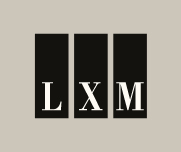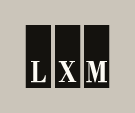Do directors routinely arrive to your Board meeting unprepared? Do you often fail to cover all the items listed on the agenda during the allotted meeting time? The root of the problem may be your meeting agenda. The importance of strong agenda preparation practices may seem self-evident yet it’s surprising how many organizations fail to get this right. The following are best practices for the development of meeting agendas that, when adopted, will contribute to overall Board meeting effectiveness.
Planning for board meeting effectiveness: Before developing the agenda
Refer to an annual Board work plan.
You shouldn’t be scrambling to put together an agenda a few days before your meeting. Have a 12-month workplan for your Board which lists the topics expected to be covered at each planned meeting which, at minimum, includes matters for which the Board is responsible as listed in corporate laws or bylaws. This work plan should be the starting point for each meeting agenda.
Develop the Agenda in advance.
The agenda drives the preparation of meeting materials. Leaving it to the last minute will inevitably have a negative impact on your meetings. Management materials prepared to support discussion items won’t be prepared in advance or, because of the short notice to Management, will be deficient. Board members receiving last-minute materials or “table drops” won’t be able to engage at the meeting and/or may misuse meeting time by asking questions that are already answered by the materials which can be a very frustrating misuse of meeting time.
Developing the agenda to maximize board meeting effectiveness
The agenda is your meeting playbook and an important corporate record. Constructing an agenda that is complete and contains the necessary information helps directors with their preparation activities and helps avoid confusion and lost time at meetings.
In addition to including planned items for discussion from the work plan, agendas should carry over unfinished business from prior meetings, any new business arising from prior meetings and include committee and management reports.
Each agenda should have 3 main sections: (1) the header; (2) items for discussion; and (3) and information items.
1. The Header
The agenda header should include the meeting title, meeting location and the start and end time of the meeting.
The name and title of expected attendees should be listed. I am surprised to see how often titles are not listed – titles are important because they may change over time. Also, you may know who these people are today but it may be important for uninformed future readers to identify, for a variety of reasons, each person’s position at the time of the meeting.
2. Items for Discussion
Items that will be discussed should be listed in the order they will be discussed. Each item should be described and accompanied by the presenter’s name and start and end time – not just the amount of time the item will be discussed. Without a start and end time, the Chairperson will have a hard time keeping the meeting on schedule.
Call to Order.
This is the official start of the Board meeting.
Approval of Agenda.
This agenda item provides the Chairperson an opportunity to rework the agenda at the start of the meeting to account for last minute issues requiring a change in priority of discussion items or for the addition of new items.
Declaration of conflicts.
While director conflicts should ideally be declared and addressed with the Chairperson in confidence prior to any meeting, it is important that the full Board be informed of any conflict and that the declaration be recorded in the minutes. (Note: conflicted directors should leave the meeting while the applicable item is discussed and decided on.)
Consent Agenda / Consent Calendar (optional).
The consent agenda is an optional, but recommended, standing item on any Board agenda. A consent agenda is titled “consent agenda” or “consent calendar” and lists non-controversial items presented for purpose of Board approval under a single motion. Having items grouped together and approved with a single Board motion shortens Board time spent on non-controversial matters and gives the Board more time to spend on strategic issues at the meeting. Popular items listed in consent agendas: meeting minutes, management reports and non-controversial financial reports. When presenting the consent agenda, the Chairperson should ask the Board if there are questions on the consent agenda items and if there are, the item should be placed elsewhere on the agenda for discussion. (Although it is typical to see Chairpersons allow the discussion to happen at this stage in the meeting, this is not a best practice.) If there are no requests to move an item off the consent agenda, then the Board approves the reports as presented with a single motion.
Items for Discussion / Standard Order of Business.
The order of discussion items has to be carefully considered by the Chairperson. By default, agendas should start with discussion topics that require a decision. This ensures important business will be concluded at the current meeting and conducted at a time where directors’ minds are fresh, rather than left to the end when directors are tired or deferred to a future meeting because you’ve run out of time.
Identify which items need a resolution – use (R) or (D).
Next to each item in this section, it is important to identify where Board decisions are required by noting an (R) (resolution) or (D) (decision) so directors know ahead of time that a decision is required on that item. This indicator will also help directors pressed for time for their meeting preparation to know where to focus their attention when preparing for the meeting.
“In Camera” session.
The ‘in camera’ session should be a standing item on every agenda and is normally left at the last item. During an in camera session, Management and any guests should leave the meeting or, depending on the topic for discussion, select guests or Management may remain at the request of the Chairperson. An in camera session that excludes Management and guests allows for a full and frank discussion between directors on how the meeting went, on sensitive matters which may or may not involve Management and promotes a greater feeling of collegiality, intimacy and teamwork among the directors which is critical to promote the right dynamic in the boardroom which should naturally lead to better decision-making by the Board. Due to the sensitivity of in camera sessions, minutes of in camera discussions are not normally recorded however there may be circumstances where minutes and/or decisions should be recorded. The Chairperson should consider when minutes are advisable.
Health breaks are important and should be listed on the agenda.
For long meetings, include scheduled time for health breaks to maintain Board meeting effectiveness. There is nothing that impacts a director’s ability to concentrate and participate more than being deprived the opportunity for a health break.
Adjournment / End of Meeting.
This is a formal declaration by the Chairperson that the meeting is ended. This can be done by motion of the Board or simply by declaration, depending on how strictly Robert’s Rules of Order are being followed.
3. Information Items
Information items are either general interest articles or administrative in nature that are noteworthy but not directly related to the business of the Board. Examples of items that are appropriately left off the discussion section of the agenda are articles or research papers of note that do not directly touch on the management of the corporation. When information items are listed among the discussion items (section 2 of the agenda), directors will inevitably use this as an opportunity for discussion which may unnecessarily distract the Board.
In this “for information” section, it’s a good idea to add a note indicating whether food will be served, especially if the meeting is around mealtime as this will guide directors on whether they should eat before arriving to the meeting. The date of next meeting can also be noted on the agenda as a reminder.
***
Getting meeting agendas right is straightforward, however many organizations may find they can do better. If your Board isn’t following the above practices, it should. Properly planned and constructed agendas can go a long way towards increasing your Board meeting effectiveness, and make your Board exponentially more effective.

